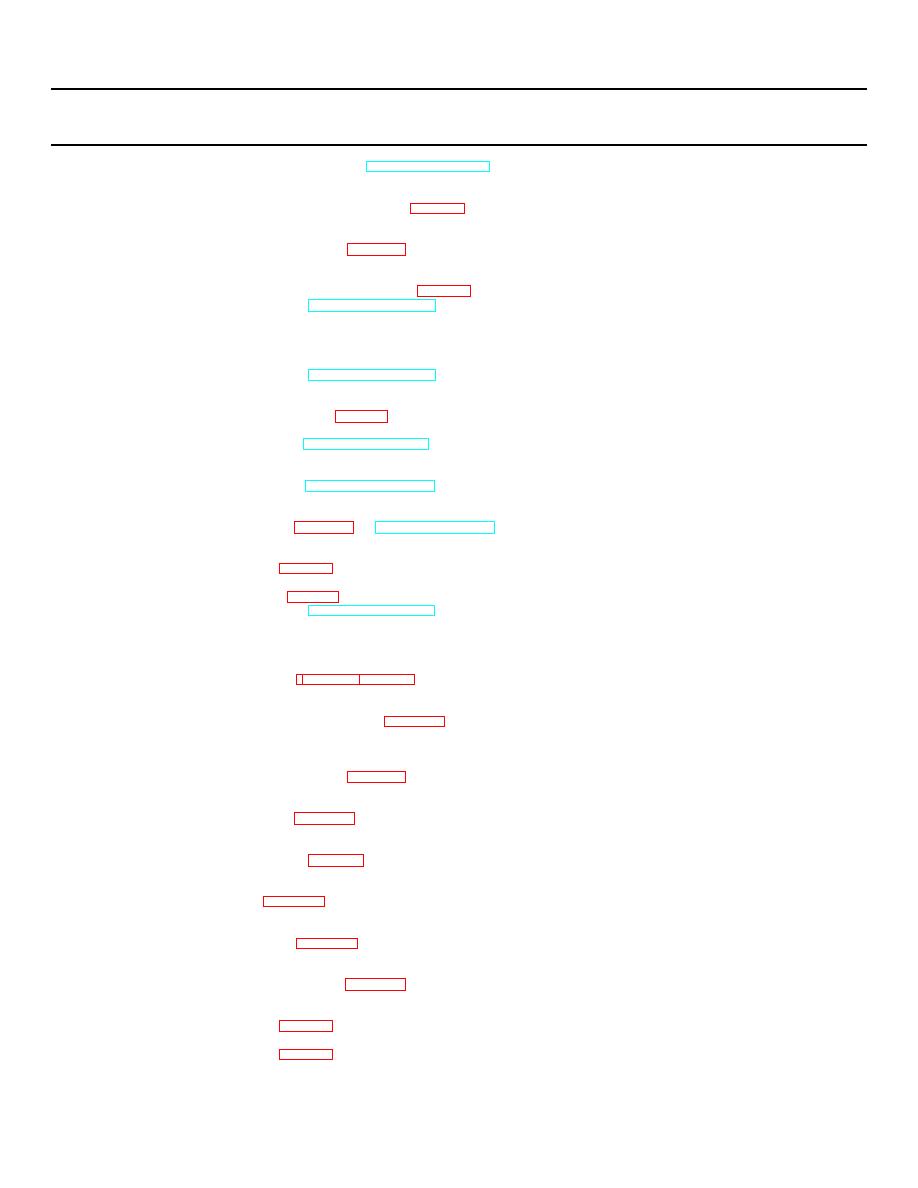 |
|||
|
|
|||
|
|
|||
| ||||||||||
|
|
 TM 10-3930-632-34
MALFUNCTION
TEST OR INSPECTION
CORRECTIVE ACTION
5.
ENGINE DOES NOT IDLE PROPERLY.
Step 1.
Test for uneven cylinder compression (TM 10-3930-632-12).
See "ENGINE CRANKS BUT WILL NOT START" above.
Step 2.
Check carburetor accelerator pump system. Inspect for dirt in metering jets, or incorrect float level.
Disassemble, clean, and overhaul carburetor (para 6-2).
6.
ENGINE BACKFIRES.
Step 1.
Check for sticking valve.
Repair or replace defective parts (para 9-10).
7.
ENGINE STALLS ON IDLE.
Step 1.
Carburetor choke valve sticking in closed position.
Free and lubricate valve. Overhaul carburetor (para 6-2).
Step 2.
Check engine compression (TM 10-3930-632-12).
Refer to "ENGINE CRANKS BUT WILL NOT START" above.
8.
ENGINE MISSES AT HIGH SPEEDS.
Step 1.
Check for sticking valves and weak or broken valve springs.
Replace defective parts (pare 9-10).
Step 2.
Check engine compression (TM 10-3930-632-12).
See "ENGINE CRANKS BUT WILL NOT START" above.
Step 3.
Inspect for dirty or defective carburetor.
Overhaul and clean carburetor (para 6-2).
9.
ENGINE LACKS POWER.
Step 1.
Check engine compression (TM 10-3930-632-12). Inspect valves and springs.
See "ENGINE CRANKS BUT WILL NOT START" above.
10.
ENGINE OVERHEATS.
Step 1.
Check engine compression (TM 10-3930 632-12).
See "ENGINE CRANKS BUT WILL NOT START" above.
Step 2.
Inspect for leaking cylinder block or head.
Replace defective parts (para 9-41 and TM 10-3930-632-12).
11.
HIGH FUEL CONSUMPTION.
Step 1.
Inspect carburetor for worn or broken parts.
Overhaul carburetor (para 6-2).
Step 2.
Carburetor float level too high; accelerator pump not properly adjusted.
Adjust carburetor float (para 6-6d ).
Step 3.
Check engine compression (TM 10-3930-632-12).
See "ENGINE CRANKS BUT WILL NOT START" above.
12.
ENGINE OIL CONSUMPTION IS HIGH.
Step 1.
Inspect pistons and rings. Check side clearance of intake valves in guide and worn cylinder bores. Inspect for excessive bearing
clearance or misaligned connecting rod.
Replace defective parts (paras 9-10 and 9-33).
13.
ENGINE OIL PRESSURE IS LOW.
Step 1.
Check for clogged oil pump screen.
Remove oil pan and clean pump screen (para 9-16).
Step 2.
Check for oil leaks.
Repair or replace defective parts.
Step 3.
Test oil pump. Check for sticking or improperly adjusted pressure regulator.
Repair or replace defective parts (para 9-15).
14.
A HEAVY DULL KNOCK SOUNDS IN ENGINE WHEN ACCELERATING UNDER LOAD.
Step 1.
Check for worn or damaged main bearings.
Replace main bearings (para 9-30).
15.
ENGINE KNOCKS WHEN LOADED OR UNLOADED.
Step 1.
Check for excessive crankshaft end play.
Adjust crankshaft end play (para 9-33j).
16.
A LIGHT METALLIC KNOCK OCCURS WHEN ENGINE IS AT ABOUT TWO-THIRDS MAXIMUM SPEED.
Step 1.
Check for worn or damaged connecting rod bearings.
Replace bearings (para 9-26).
17.
A PERSISTENT SHARP CLICKING NOISE OCCURS AT ANY ENGINE SPEED.
Step 1.
Check for broken piston ring or pin.
Replace defective parts (para 9-26).
18.
ENGINE VIBRATES AT ALL SPEEDS.
Step 1.
Check flywheel for proper balance.
Repair or replace defective parts (para 9-22).
19.
FUEL REACHES CARBURETOR BUT DOES NOT REACH CYLINDER.
Step 1.
Check carburetor for clogged fuel passage.
Overhaul carburetor (para 6-2).
Step 2.
Check carburetor for stuck float.
Overhaul carburetor (para 6-2).
2-2
|
|
Privacy Statement - Press Release - Copyright Information. - Contact Us |